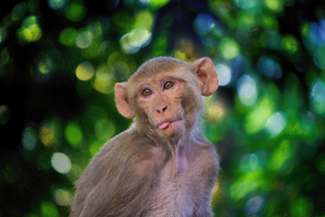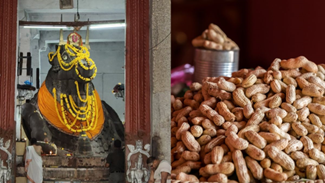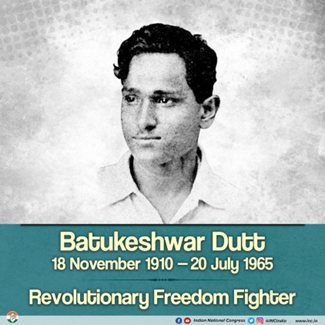Indian Polity
Zonal Council:
-
- Context: Delhi blast culprits will get strictest punishment, Union Home Minister says at Zonal Council meet.
- Purpose: Promote cooperation and coordination between states in matters of economic and social planning, inter-state disputes, and development.
- Constitutional Backing: Established under Part-III of the States Reorganisation Act, 1956.
- Number of Councils: Five Zonal Councils – Northern, Southern, Eastern, Western, and Central.
- North-Eastern states have a separate North Eastern Council (1992).
- Composition:
- Chief Ministers of states in the zone.
- Union Ministers nominated by the Central Government.
- Administrator of Union Territories in the zone.
- Chairmanship: The union Home minister is the common chairman; each council meets once a year.
- Functions:
- Promote inter-state cooperation.
- Resolve inter-state disputes.
- Discuss infrastructure, health, education, transport, and security issues.
(TH)
Geography, Mapping, Ecology & Environment
Rhesus Macaque:
-
- Context: The National Board for Wildlife recommended reinstating the Rhesus Macaque under Schedule II of the Wildlife (Protection) Act to protect them legally.
- IUCN Status: Least Concern.
- Legal protection will help deal with illegal capture, cruelty, and better scientific management of the species.
- Despite their abundance, conflict with humans is real: monkeys are visible, live close to people, and sometimes raid crops or human settlements.
- Experts propose zoning-based management:
1. Conservation zones (forest)
2. Co-existence zones (rural)
3. Management zones (urban/conflict-prone)
-
- One major ecological role: seed dispersal — Rhesus monkeys help in forest regeneration by spreading seeds.
- Conflict mitigation suggestions: sterilisation, better population data, and discouraging people from feeding monkeys (especially in urban areas)

(IE)
Science & Technology
Sentinel-6B:
-
- Sentinel-6B is a joint NASA-ESA (Copernicus) mission to monitor sea-surface height.
- Launched on 17 November 2025 by a SpaceX Falcon 9 from Vandenberg.
- Will continue the sea-level record started in early 1990s (Jason series → Sentinel-6 Michael Freilich).
- Carries a Poseidon-4 radar altimeter (for centimetre-level sea height), a microwave radiometer (for water vapour), and GNSS-RO instruments (for atmospheric profiling).
- Maps ~95% of the ice-free oceans every 10 days.
- Data helps with:
1. Tracking sea-level rise and climate change.
2. Weather forecasting, especially for storms, El Nino/La Nina.
3. Coastal planning & risk assessment for flooding and infrastructure.
-
- It will operate in tandem with its predecessor (Sentinel-6A) for about a year to cross-calibrate and maintain data continuity.
- Key example of international cooperation: ESA, NASA, EUMETSAT, NOAA, European Commission, CNES all involved.

(IE)
History, Art & Culture
Kadalekai Parishe (Groundnut Festival):
-
- Annual groundnut (peanut) festival celebrating the harvest of the crop.
- In Basavanagudi, a historic neighborhood in Bengaluru, Karnataka.
- Held in November, traditionally on the Monday following the full moon of Karthika month (according to the Hindu calendar).
- Significance:
- Marks the harvest of groundnuts and seeks blessings for a good crop.
- Farmers offer groundnuts to the Bull Temple deity (Nandi), a ritual unique to this festival.
- Cultural Aspect:
- Includes street fairs, traditional food, and folk performances.
- Promotes local agriculture and community participation.
- Unique feature: Considered one of the largest groundnut festivals in India, blending religious devotion and agricultural celebration.

(TH)
Government Schemes
Centrally Sponsored Umbrella Scheme of Integrated Development of Wildlife Habitats (CSS-IDWH):
-
- Context: States must actively consider notifying any ‘human-wildlife conflict’ as natural disaster: SC
- Purpose: Provides financial support for wildlife conservation and habitat development across India.
- Focuses on protection, management, and development of wildlife habitats.
- Nature of Scheme: Centrally Sponsored Scheme (CSS) – funding shared between Centre and States (typically 60:40).
- Objectives:
- Strengthen protected areas (National Parks, Wildlife Sanctuaries, Conservation Reserves, Community Reserves).
- Support landscape-level management for species conservation.
- Control human-wildlife conflict and promote eco-development of local communities.
- Components:
- Habitat improvement
- Anti-poaching measures
- Wildlife monitoring and research
- Community participation and awareness programs
- Implementation: Executed by State/UT Forest/Wildlife Departments with technical support from Wildlife Institute of India (WII) and other institutions.
- Significance: Contributes to biodiversity conservation, ecosystem balance, and long-term sustainability of wildlife habitats.
(TH)
Terms in news
Neurotechnology:
-
- Neurotechnology encompasses the devices and procedures used to access, assess, and act on the nervous system, especially the human brain, to understand its functions, treat disorders, or enhance capabilities.
- This interdisciplinary field integrates neuroscience, engineering, and artificial intelligence to create interfaces between the organic nervous system and technological components.
- With advances in research and investments in projects like the S. BRAIN Initiative and Elon Musk’s Neuralink, there is significant interest today in brain-computer interfaces, particularly those driven by artificial intelligence (AI).
- For example, AI-assisted neuroimaging can allow doctors to precisely detect tumours and identify the possibility of stroke in people.
(TH)
Personalities in news
Batukeshwar Dutt:
-
- Indian freedom fighter and revolutionary, associated with the Hindustan Socialist Republican Association (HSRA).
- Famous Act: Along with Bhagat Singh, he threw bombs in the Central Legislative Assembly, Delhi, on 8 April 1929, to protest repressive laws.
- The bombs were non-lethal, intended to make noise and attract attention, not to kill.
- Philosophy: Believed in revolutionary activism combined with socialist ideas to overthrow British colonial rule.
- Imprisonment: Arrested along with Bhagat Singh; used the trial as a platform to publicize the independence struggle.
- Later Life:
- Continued to work for revolutionary and social causes.
- Lived in relative obscurity after India’s independence.
- Legacy: Remembered as a courageous revolutionary who, along with Bhagat Singh, inspired youth against British colonial rule.

(TH)
Miscellaneous
Gopal Ratna awards:
-
- Context: Aravind Yashavant Patil, a farmer from Kolhapur, Maharashtra, won this year’s National Gopal Ratna Awards (NGRA), constituted by the Union Animal Husbandry Ministry, for best dairy farmer rearing indigenous cattle/buffalo breeds.
- Nodal Ministry: Awarded by the Department of Animal Husbandry & Dairying (DAHD) under the Ministry of Fisheries, Animal Husbandry & Dairying.
- Purpose: To recognize individuals, dairy farmers, cooperatives, FPOs, and institutions for excellence in:
- Breed conservation,
- Milk production,
- Scientific management of indigenous cattle and buffalo breeds.
- Link to National Programme: Part of the focus on Rashtriya Gokul Mission (RGM) for conserving and genetically improving indigenous bovine breeds.
- Award Categories:
- Best Dairy Farmer
- Best Artificial Insemination Technician
- Best Milk Cooperative / FPO / Milk Producer Company
- Importance: Encourages adoption of advanced breeding technologies, productivity improvement, and promotion of indigenous breeds for sustainable livestock development.
(TH)
PRACTICE MCQ’S
Q1. Consider the following statements regarding Zonal Councils:
Statement I: Zonal Councils were established by the Constitution of India under Article 263.
Statement II: The Prime Minister of India is the permanent chairman of all Zonal Councils.
Which one of the following is correct in respect of the above statements?
a) Both Statement I and Statement II are correct and Statement II explains Statement I
b) Both Statement I and Statement II are correct but Statement II does not explain Statement I
c) Statement I is correct but Statement II is not correct
d) Neither Statement I nor Statement II is correct
Answer: D
Explanation:
Statement I is incorrect: Zonal Councils were established under the States Reorganisation Act, 1956, not directly by the Constitution (Article 263 deals with Inter-State Councils, which is different).
Statement II is incorrect: The union Home minister is the common chairman of the Zonal Councils, not the Prime Minister.
Q2. Consider the following statements regarding the Centrally Sponsored Umbrella Scheme of Integrated Development of Wildlife Habitats (CSS-IDWH):
Statement I: It is a centrally sponsored scheme implemented jointly by the Centre and States for wildlife habitat development.
Statement II: The scheme focuses only on National Parks and excludes other protected areas like Wildlife Sanctuaries and Community Reserves.
Statement III: It includes components such as habitat improvement, anti-poaching measures, wildlife monitoring, and community participation.
Which one of the following is correct in respect of the above statements?
a) Both Statement II and Statement III are correct and both of them explain Statement I
b) Both Statement II and Statement III are correct but only one of them explains Statement I
c) Only one of the Statements II and III is correct and that explains Statement I
d) Neither Statement II nor Statement III is correct
Answer: C
Explanation:
Statement I is correct: CSS-IDWH is a centrally sponsored scheme, funding shared between Centre and States for wildlife habitat development.
Statement II is incorrect: The scheme does not focus only on National Parks; it includes Wildlife Sanctuaries, Conservation Reserves, and Community Reserves as well.
Statement III is correct: The scheme includes habitat improvement, anti-poaching measures, wildlife monitoring, and community participation, which explains how the scheme functions to achieve its objectives.
Q3. Consider the following statements regarding Kadalekai Parishe:
1. Kadalekai Parishe is an annual groundnut festival held at Basavanagudi in Bengaluru.
2. During the festival, farmers offer groundnuts to the Bull Temple deity (Nandi) seeking blessings for a good harvest.
3. The festival is celebrated significantly all over Karnataka and Tamil Nadu.
How many of the above statements are correct?
a) Only one
b) Only two
c) All three
d) None
Answer: B
Explanation:
Statement 1 is correct: Kadalekai Parishe is held annually in Basavanagudi, Bengaluru.
Statement 2 is correct: Farmers traditionally offer groundnuts to the Nandi deity at Bull Temple.
Statement 3 is incorrect: The festival is specific to Basavanagudi and is not celebrated all over Karnataka and Tamil Nadu.
Q4. Consider the following pairs:
| Column I (Festival) | Column II (State / Region) |
|---|---|
| A. Kadalekai Parishe | 1. Punjab |
| B. Makar Sankranti | 2. Karnataka |
| C. Bihu | 3. Uttar Pradesh |
| D. Lohri | 4. Assam |
| E. Uttarayan | 5. Gujarat |
Codes:
a) A-2, B-3, C-4, D-1, E-5
b) A-2, B-3, C-4, D-5, E-1
c) A-2, B-3, C-4, D-1, E-3
d) A-3, B-2, C-4, D-1, E-5
Answer: A
Explanation:
A. Kadalekai Parishe – Karnataka
Annual groundnut festival at Basavanagudi, Bengaluru.
B. Makar Sankranti – Uttar Pradesh
Celebrated in north India as a harvest festival in January.
C. Bihu – Assam
Major Assamese harvest festival, marking the rice harvest.
D. Lohri – Punjab
Punjabi harvest festival, especially for sugarcane and rabi crops.
E. Uttarayan – Gujarat
Kite festival in Gujarat, coincides with harvest season.
Q5. Which one of the statements given below regarding Batukeshwar Dutt is incorrect?
a) He was a member of the Hindustan Socialist Republican Association (HSRA).
b) He, along with Bhagat Singh, threw bombs in the Central Legislative Assembly in Delhi in 1929.
c) The bombs thrown by Dutt and Bhagat Singh were non-lethal and intended to make noise, not to cause deaths.
d) He was awarded the Padma Bhushan post-independence for his role in the freedom struggle.
Answer: D
Explanation:
Statement I is correct: Dutt was a prominent member of the HSRA, a revolutionary organization.
Statement II is correct: On 8 April 1929, he and Bhagat Singh threw bombs in the Central Legislative Assembly, Delhi.
Statement III is correct: The bombs were non-lethal, meant as a symbolic protest, not to kill anyone.
Statement IV is incorrect: Batukeshwar Dutt was not awarded the Padma Bhushan or any other national civilian award post-independence.
Q6. Sentinel-6B, recently in news, is primarily designed to monitor which of the following?
a) Air pollution levels over industrial regions
b) Earth’s sea-surface height and sea-level rise
c) Forest cover changes in tropical regions
d) Movement of tectonic plates
Answer: B
Explanation:
Sentinel-6B is a joint NASA–ESA Copernicus satellite specifically designed to measure sea-surface height, track sea-level rise, and monitor ocean conditions using advanced radar altimetry. It continues the long-term ocean monitoring record started in the 1990s.
Spread the Word
